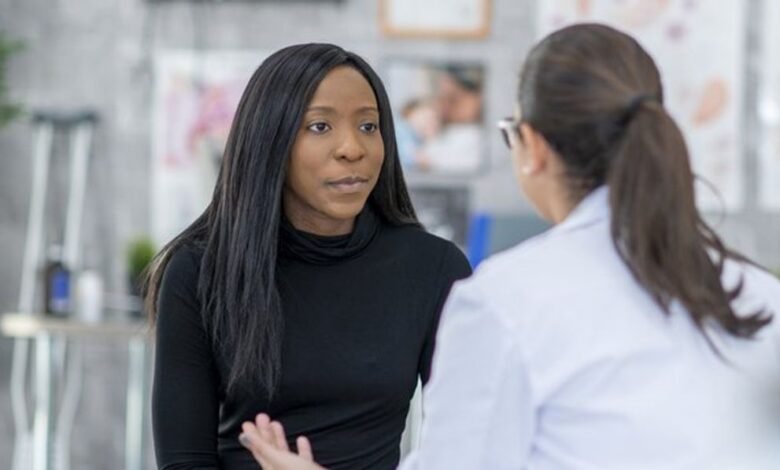The Cost of Racial Bias in OB-GYN Care

What does racial bias look like in gynecological and uterine health? A comprehensive review that examined multiple areas of reproductive health found racial and ethnic disparities that led to worse outcomes for women of color.
The statistics tell the story.
In 2022, the American College of Obstetricians and Gynecologists (ACOG) released a policy statement acknowledging how racial bias among healthcare providers (HCPs) contributed to inequities in health outcomes.
“I think everyone has biases and they can influence a provider’s perspective,” said Jessica Shepherd, M.D., an OB-GYN and women’s health expert at Baylor University Medical Center and a member of HealthyWomen’s Women’s Health Advisory Council. “When they walk into a room and see someone who might be a different race, [that can influence] the options they present to that patient,” Shepherd said.
The racist origins of gynecology
To begin looking at why racial bias can show up in gynecological and uterine healthcare, both Shepherd and Carmen Green, vice president of research and strategy at the National Birth Equity Collaborative, point to the field’s origins. J. Marion Sims, the doctor who is considered the “father of modern gynecology,” experimented on enslaved Black women without the use of anesthesia or numbing agents, and an instrument he invented, the Sims Speculum, is still in use today.
“We always acknowledge the mothers of gynecology, Lucy, Betsey and Anarcha, the three women we know who were used as medical tools by J. Marion Sims,” Green said. “We’re rehumanizing them and acknowledging the experience of torture that these Black women had to go through.”
That history set a foundation of bias and stereotyping in the medical curriculum, such as the idea that patients with darker skin have a higher tolerance for pain or require different procedures to cut through the skin because darker skin is thicker. These false beliefs are among the reasons that women of color might have their complaints of pain undertreated or dismissed altogether to this day.
As the U.S. became more industrialized, healthcare moved to a more medicalized model. This put more authority in the hands of HCPs versus traditional midwifery models that were more women-centered. The traditional midwifery model allowed midwives to spend more time developing relationships with pregnant women and working to meet their desires during labor and delivery.
Shepherd said she wants to have similar relationships with her patients, and spend whatever time might be needed to help them find solutions to their concerns. When she does full workups in response to patients coming in with pain, she’s able to diagnose conditions like fibroids, endometriosis and chronic pelvic pain and develop treatment plans. She said she often provides a second, third or even fourth opinion for patients told by other HCPs that they have to have a hysterectomy or other major procedure. They’re often not given other options until they meet with her, she said.
“Seeing [bias] firsthand has been somewhat disturbing,” Shepherd said about treating patients who’ve only been offered hysterectomy or other invasive procedures for gynecological concerns. “I do my best to educate women about their options and be empathetic to their journey so they can have just as much decision-making autonomy as any other person.”
Understanding the disparities in hysterectomy (removal of the uterus) rates is also important, Shepherd said, because they illustrate one way racial bias in gynecological care has harmed women of color.
Black women have the highest hysterectomy rates of all races, and more hysterectomies are performed in southern states, which have proportionally larger Black populations. One study found that up to 90% of hysterectomies among Black patients at rural hospitals occur in the South.
Some studies suggest Black women are also more likely to have the procedure at younger ages, often when they’re still able to have children. High rates of hysterectomy during the reproductive years have been connected to a history of the procedure being done without consent or proper education about its risks, effectively serving as a forced sterilization method for many Black women who wanted children or wanted more children. Black women are also more likely to suffer from uterine fibroids at younger ages, and hysterectomy is often recommended as a treatment instead of less invasive procedures.
While a hysterectomy might be the right choice for some women, HCPs are advised to consider the surgery as a last resort because removing reproductive organs can increase the risk of developing heart disease, osteoporosis, dementia, mental health issues and other health conditions.
Shepherd said such surgeries might not be necessary in many cases, and Black women could be offered less invasive procedures instead. Or, when a hysterectomy is the only option, it’s often because a reproductive issue wasn’t diagnosed or treated in earlier stages when less invasive options might have worked.
Bias can destroy communities
The long-term impact on each woman’s health affects entire communities. The financial, physical and mental cost of chronic pain and poor health can prevent women from working, going to school, caring for family and simply experiencing the quality of life they’d like to have.
Conditions that could have been addressed through minimally invasive procedures if diagnosed earlier can become disabling, or require major surgery that forces time away from work and limited movement to heal and recover.
At worst, there’s the risk of death, whether from pregnancy-related causes, cancer or other conditions. Children lose mothers and families lose loved ones.
“The systems and structures within healthcare work together against us in so many ways,” Green said. “That’s why our advocates continue to be so committed because we know it’s more than healthcare. The legacy of our families and our communities rests so much on Black women. Anything that undermines that has to be examined.”
Shepherd said much of the higher rate of maternal death or illness relates to missed signs, delayed action or a lack of action by HCPs.
“If someone says, ‘I feel pain,’ or ‘I don’t feel right,’ it’s the furthering of questions that might say, ‘Hey, this person is really at high risk for this condition. Let’s do the extra work to make sure it’s not that,” she said. “Or, ‘I know that there’s a higher incidence of this happening, let’s do everything we can to prevent that from happening.’”
Empowering women and providers for change
Both Green and Shepherd want Black women to feel empowered to advocate for their needs, and for HCPs to examine any racial biases they might have and whether they influence how they deliver care. “The dynamic essentially between the birthing person and the provider has taken on … a power dynamic with a lot of fear. And over time women haven’t been given the tools to advocate for themselves,” Green said. “It takes a culture shift to shake us out of this fear of challenging authority and shake medical professionals out of this belief that their authority usurps people’s bodily autonomy.”
The National Birth Equity Collaborative, where Green works, offers training to providers and birthing facilities to provide more equitable care. It also established a policy and research arm to fight rising rates of maternal mortality for women of color. In a growing number of communities, midwives and birthing centers are providing spaces for women of color to gain more control over their birthing experience.
In the policy space, advocates say that increasing access to free or affordable primary care and reproductive healthcare at all life stages could go a long way toward reducing racial inequities. Organizations of healthcare providers like ACOG have also committed to working more collaboratively with the broader public health community and incorporating more lessons on history and racial bias into medical school curricula.
Patients themselves are also encouraged to speak up to HCPs about any reproductive health concerns and look for second opinions when needed.
Shepherd said her experiences with patients desperately seeking answers have shown her the importance of taking additional time to ensure she addresses her patients’ concerns. She wants other HCPs to do the same and to be honest about the way bias could shape the way they treat patients.
“I think sometimes because we’re so good at trying to fix things that are wrong, we’re not taking time to look at the person behind the problem,” Shepherd said. “It’s important to check our biases and do some internal work and ask ‘How am I contributing to this issue? What do I need to address individually and how can I speak up for my patients?’”
This resource was created with support from Myovant Sciences GmbH.
Source link
#Cost #Racial #Bias #OBGYN #Care



